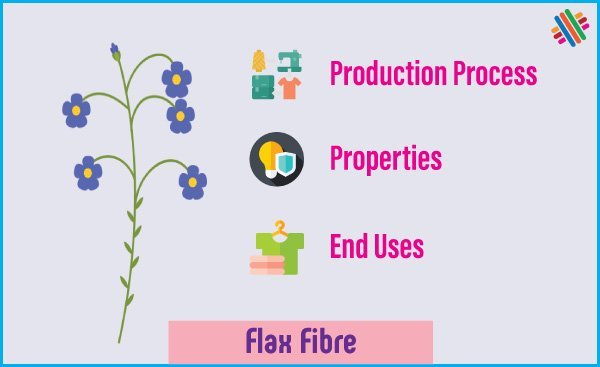Synthetic Fibres: Characteristics and End Usage
Last updated on July 21st, 2023 at 10:42 pm
There are twelve major groups of Synthetic or manufactured fibres, eight of which are found in considerable abundance in fashion apparel, wearable accessories, and home furnishings. Each has specific characteristics that are unique and are wearable under trade names that belong to their producers. For example, Zafran is Nylon that is produced by BASF Corporation, Solara is an acrylic product of Monsanto, and Estron is acetate owned by Eastman Chemical products.

The textiles that are achieved with these manufactured fibres come in a wide range of textures, appearances, and feels. They are used to produce fabrics that bear the same names as those produced with natural fibres such as batiste, which is synonymous with cotton; flannel, generally associated with wool; satin, often a silk fabric; shantung, another silk favorite; and crash, a heavyweight linen product. The manner in which they are converted from their fibre state to yarn and then to fabric, dictates the types of fabrics that will eventually be used for wearable items and home furnishings.
Now discussing the eight major generic groups of fashion-oriented manufactured fibres, their characteristics, the types of fabrics they are used to produce, and their apparel and home furnishings uses as follows:
Acetate Fibre
Characteristics
Luxurious feel and appearance, wide range of colors and lusters, excellent drapability and softness, relatively fast drying.
Fabrics
Brocade, crepe, double knit, faille, knitted jersey, lace, satin, taffeta, tricot.
Wearable Uses
Blouses, dresses, foundation garments, lingerie, linings, shirts, slacks, sportswear.
Home Products
Acrylic Fibre
Characteristics
Soft and warm, wool-like, lightweight, retains shape, resilient, quick-drying, moth-resistant, resistant to sunlight, oil, and chemicals.
Fabrics
Fleece and pile fabrics, face fabrics in bonded materials, simulated furs, jerseys.
Wearable Uses
Dresses, infant wear, knitted garments, skirts, ski wear, socks, sportswear, sweaters, work clothes.
Home Products
Blankets, carpets, draperies, upholstery.
Modacrylic Fibre
Characteristics
Soft, resilient, abrasion and flame resistant, quick-drying, resists acids and alkalis, retains shape.
Fabrics
Fleece fabrics, knit-pile fabric backings, non-woven fabrics.
Wearable Uses
Deep pile coats, trims, linings, simulate furs, wigs, and hairpieces.
Home Products
Blankets, carpets, flame-resistant, draperies and curtains, rugs.
Nylon Fibre
Characteristics
Exceptionally strong, supple, abrasion-resistant, lustrous, easy to wash, resists damage from oil and many chemicals, resilient, low in moisture absorbency.
Fabrics
Knitted and woven fabrics.
Wearable Uses
Blouses, dresses, foundation garments, hosiery, lingerie and innerwear, raincoats, ski and snow apparel, suits, windbreakers.
Home Products
Bedspreads, carpets, draperies, curtains, upholstery.
Olefin Fibre
Characteristics
Unique wicking properties that make it very comfortable; abrasion-resistant, quick drying; resistant to deterioration from chemicals, mildew, perspiration, rot, and weather; sensitive to heat; soil resistant; strong; very lightweight; excellent colorfastness.
Fabrics
Knitted and woven fabrics.
Wearable Uses
Pantyhose, underwear, sports shirts, sweaters.
Home Products
Carpet, carpet backing, slipcover, upholstery.
Polyester Fibre
Characteristics
Strong, resistant to stretching and shrinkage, resistant to moist chemicals, quick-drying, crisp and resilient when wet or dry, wrinkle and abrasion resistant retains heat-set pleats, and crease, easy to wash.
Fabrics
A variety of knitted and woven fabrics.
Wearable Uses
Blouses, shirts, children’s wear, dresses, half hose, ties, lingerie, underwear, permanent press garments, slacks, suits.
Home Products
Carpets, curtains, draperies, bedding.
Rayon Fibre
Characteristics
Highly absorbent, soft and comfortable, easy to dye, versatile, good drapability.
Fabrics
Knits, pile fabrics, woven fabrics that simulate flax.
Wearable Uses
Blouses, coats, dresses, jackets, lingerie, linings, millinery, rainwear, slacks, shirts, suits, ties.
Home Products
Bedspreads, blankets, carpets, draperies, sheets, slipcovers, tablecloths, upholstery.
Spandex Fibre
Characteristics
Can be stretched 500 percent without breaking, lightweight.
Fabrics
Elasticized woven and knitted fabrics.
Wearable Uses
Athletic apparel, bathing suits, foundation garments.




Informative article….Thanks